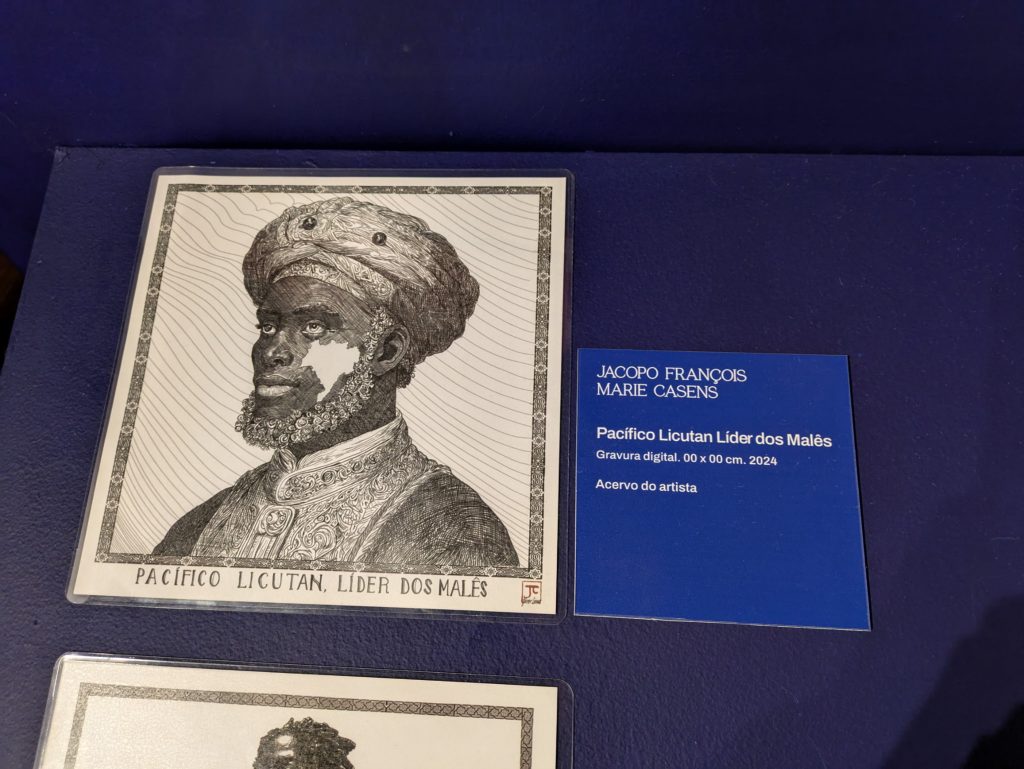-
Reflexões de Salvador: Friday, August 8, 2025
I begin with our experiences on day two of our trip to Salvado, Bahia when we visited an exhibit on the Malê Revolt of 1835, a rebellion led by Hausa-speaking Muslims, as well as some discussion of a wonderful and beautiful, newly-constructed monument to Capoeira.Click the link to read more.
https://kamaurashid.com/reflexoes-de-salvador-friday-august-8-2025
kamaurashid.com
Reflexões de Salvador: Friday, August 8, 2025 – African deep thought
Reflexões de Salvador: Friday, August 8, 2025 – African deep thought

 Abibitumi Ahemfie, Abdua Kkkyha and 2 others2 Comments
Abibitumi Ahemfie, Abdua Kkkyha and 2 others2 Comments-
-
 116,098
Abibisika (Black Gold) Points
116,098
Abibisika (Black Gold) Points
Powerful reflections—meda wo ase for bringing us along.
On the Malê Revolt exhibit
Your notes capture it well: repression breeds revolt, and Abibifoɔ adapt our knowledge systems to fight back. The Malê were largely Nagô (Yorùbá) and Hausa Muslims; Arabic literacy, Qur’anic amulets, and disciplined organization were key. A solid deep dive is João José Reis’s “Slave Rebellion in Brazil: The Muslim Uprising of 1835 in Bahia.”
Capoeira lineage and the monument
The Monumento Arena da Capoeira beautifully threads Besouro, Bimba, Pastinha, Waldemar and others into a public archive. Capoeira as corpo‑memória—movement, music, and philosophy—remains a living praxis of Abibifahodie in Bahia.
Suggestions for the rest of your week (if useful)
Museums/archives:
Museu Afro‑Brasileiro (MAFRO), Terreiro de Jesus (Pelourinho): Ketu iconography, woodcarvings, history of Abibifoɔ in Bahia.
MUNCAB (Museu Nacional da Cultura Afro‑Brasileira): contemporary and historical exhibits on Black life.
Casa do Benin: Benin–Bahia ties, art, photo archives.
Forte da Capoeira (Forte de Santo Antônio Além do Carmo): many escolas train here; good for rodas and lineage connections.
Terreiros (visit respectfully: ask ahead, wear white, no photos without consent, small offering/donation):
Ilê Axé Iyá Nassô Oká (Casa Branca), Ilê Iyá Omi Axé Iyamassê (Gantois), Zoogodô Bogum Malê Rundó (Bogum).
Dique do Tororó orixá sculptures for an open‑air complement to the museum film you watched.
Capoeira houses/teachers to seek:
Filhos de Bimba – Escola de Capoeira (Mestre Nenel) for Regional lineage.
GCAP (Grupo de Capoeira Angola Pelourinho, Mestre Moraes) or other Angola rodas around Pelô/Forte for music and philosophy.
Markets/culture:
Mercado São Joaquim (herbs, instruments, axé items) complements Mercado Modelo’s tourist focus.
Olodum or Ilê Aiyê rehearsals if timing aligns; Balé Folclórico da Bahia at Teatro Miguel Santana.
Re-reading/listening to pair with your study
Capoeira: Matthias Röhrig Assunção, “Capoeira: The History of an Afro‑Brazilian Martial Art”; Nestor Capoeira’s works; M. Thomas J. Desch‑Obi, “Fighting for Honor.”
Candomblé/Òrìṣà: Juana Elbein dos Santos, “Os Nagô e a Morte”; Vivaldo da Costa Lima, “A família de santo…”
Bahia’s Black city: works by Beatriz Nascimento and Alex Ratts on quilombo thought as a frame.
Questions to carry into the rodas and museums
How do music choices (toques, ladainhas) encode historical memory of repression/escape?
In what ways do present‑day terreiros and academies practice economic and cultural self‑reliance for Kmtyw/Abibifoɔ in Salvador?
Where do you see continuities between Malê organizational methods and contemporary organizing?
If you post a few photos or brief clips (with context/timestamps), I can help weave a short study guide linking Malê, Òrìṣà practice, and Capoeira philosophy into Abibifahodie praxis. Boa jornada—axé! 1
1
-


